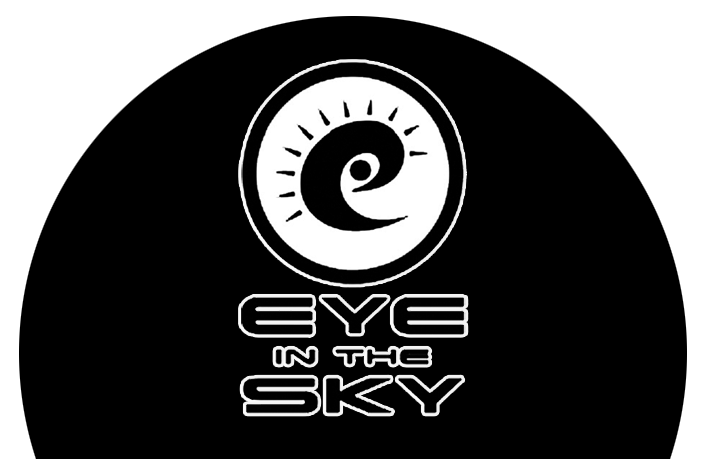DORNIER
BEHIND THE SCENES
Air-to-air (A2A) shoot of a Dornier 328, Western Australia
I was asked to photograph the Dornier 328 for the Australian Maritime Safety Authority. Here is the subsequent shoot over Rottnest Island in Western Australia.
The thing about this aircraft, with its very distinctive shape and colour scheme, is that it is hard to miss. I had often looked down on this aircraft when departing in a helicopter from Perth Domestic Airport, we always flew over it as it was on the apron near the Perth Flight Centre. I remember thinking that it had great visual lines and that one day I must try and find out what it was. I thought I recognized most aircraft but I had no idea what this machine was.
So it was with some surprise that I found myself in a pre-shoot briefing between Perth based Aero Rescue and the Australian Maritime Safety Authority (AMSA), chatting about how we were going to shoot this aircraft, at the same time I was reading up as much as I could about the Dornier 328, as my only knowledge of Dornier’s were the ones that regularly visited the UK....back in the early 1940's!.
AMSA awarded a contract to AeroRescue in 2005 for long-range Search and Rescue (SAR) capability around Australia. Five Dorniers were to be stationed around our coastline, capable of responding to any emergency 24 hours a day, and within a window of 30 minutes. The aircraft were equipped with ultra modern electronic sensor suites, Radar and Forward Looking Infra Red (FLIR), Direction Finder and Infra Red/Ultra Violet scanners. The idea was that the aircraft would arrive on station over an emergency area and be able to despatch stores through a rear cargo hatch. This would include food, communications, shelter, 20 man life rafts, flares, tents etc. They are progressively being upgraded with an in-flight opening cargo door to allow despatch of larger items, boat dewatering pumps for ocean rescues, plus 20 man life rafts etc. Firstly we were asked to shoot all their products on location against a blue background, then strip in a new gradient as background in post production. This set the scene for the subsequent air-to-air shoot of their Dornier 328.
We looked at the fixed wing option as a camera platform but having just shot the Pilatus PC12 from an R44 helicopter, we realized that because the speeds are pretty compatible at around 120 kts, an AS350 would be perfect as the camera platform. We opted for hand held still cameras rather than a gyro stabilised system in the underbody pod as it gave more flexibility when shooting from the many varied angles the helicopter could provide. As the aircraft acts as a life-line for people stranded or in trouble either in water or on land, we thought as a background, the reef system of Rottnest Island could work well. We did a couple of visits just looking at the aircraft on the ground, studying its lines and possible angles. The more I looked at this aircraft the more I appreciated its design and styling. This was one superbly built aircraft.
As always, we used David Adamson and his AS3590 helicopter from Perth based Rotorvation Helicopters. The AS350 gave us a slightly better margin for error over the R44, and with my full face helmet I could get out into the slipstream without my eyes streaming, as is the case without a helmet. So our briefing was with the two Dornier pilots, Steve Harris and Russell Buchanan, Shane Johnson from AMSA, David, Alexis and myself. What David always states is that the target aircraft fly on a set heading and a set height. This gives him the chance to see how stable they are in the air, only then can he get close so I can get my shots. Many sorties ended up in a mess when we got on site where the pilot could not keep the heading, meaning we cannot get close. We are always trying to counter the inability of the target pilot in keeping a straight line. So David and I looked at each other, both thinking 'well lets see if they can do what they say they can'.
We arrived off Rottnest Island at about 1500 feet and waited. The Dornier came in, we approached it tentatively, and the aircraft remained there rock steady, doing everything David asked. These guys were superb, they noticed how close we were, registered it and stuck to their instruments and held the pattern. David, being a Scot, and not prone to showing too much emotion, turned to me with a thumbs up, saying 'These guys know what they are doing'. So it was on with the show.
We got so close that I could almost put my foot out and touch the tail elevators. The aircraft was steady as a rock. It turned, we turned, it was perfect.
This aircraft looked good from any angle, and because of the crews coordination, meant that we could push the envelope a bit and achieve any shot I wanted. Birds eye, tail on, head on, three quarter, banking etc. So for 45 minutes I just kept my eye to the viewfinder and captured the beauty of this very graceful aircraft.
Facts
The Dornier 328, a turboprop-powered commuter airliner was initially produced by Dornier Luftfahrt GmbH in Germany. In 1996 the company was bought by Fairchild Aircraft and was re-named Fairchild-Dornier, with manufacture of the 328 being undertaken in Oberpfaffenhofen, Germany and sales conducted from San Antonio, Texas, in the US. The aircraft first flew in 1991 and entered service with Air Engiadina in 1993. Over 100 aircraft have been delivered. In July 2002, Fairchild Dornier was declared insolvent. In March 2003, AvCraft Aviation of Virginia acquired the 328 program including the 32-seat 328JET and 328 turboprop. AvCraft filed for insolvency in March 2005.
28 -300mm Nikon lens, Nikon D800.
All photography and text © Jon Davison 2017.



















